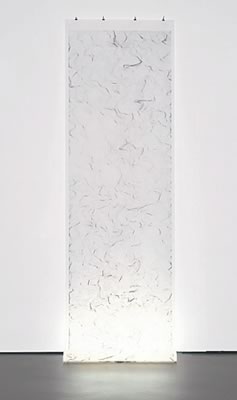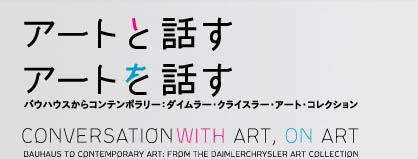Materials, techniques and the way works are presented
often serve as a key to read works of art.
In 1957, sometime after World War II, a group called ZERO initiated
an avant-garde movement aiming to create new art in Dusseldorf.
It broke away from established social norms and artistic traditions,
and started entirely new approaches toward art from “zero point.”
Materials seen in our daily life that are unconventional for
art, such as feathers, cork, coins and neon tubes, were incorporated
in the works of Zero artists. No concrete representations can
be found in their works. Judging from the fact that materials
are placed systematically without being altered, the artists’
intentions seem to be different from those pursued in traditional
art, such as a realistic rendition, or an expression of inner
self.
In addition to a careful study of formal elements, figuring
out a reason for an artist’s choice of a particular material
will eventually reveal messages conveyed in a works of art.
Artists:
Enrico Castellani, Dadamaino, Jan Henderikse, Francois
Morellet, Jean Tinguely, Simone Westerwinter and more |
|
 |
| Dadamaino《The
movement of things》1995 |
|
